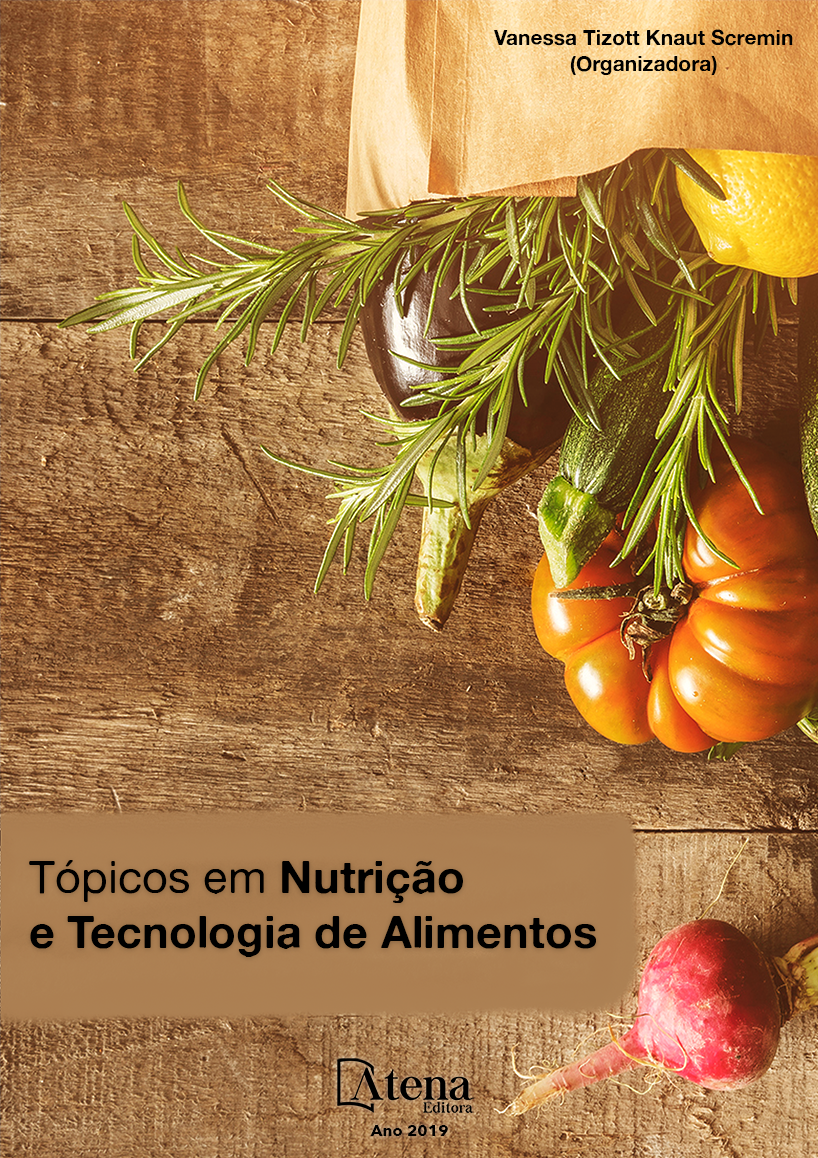
MORTADELA TIPO BOLOGNA ADICIONADA DE FARINHA DE SEMENTE DE ABÓBORA (Cucurbita maxima) COMO ANTIOXIDANTE NATURAL
A mortadela é um embutido cárneo
de elevada aceitação mundial e com produção
crescente no Brasil. Contudo, devido ao
elevado teor de gordura em sua composição,
este produto sofre oxidação lipídica, a qual
agrava-se no período de armazenamento.
Para diminuir estes mecanismos oxidativos,
comumente é utilizado o eritorbato de sódio
como antioxidante sintético, porém, existe
uma forte tendência pelo uso de ingredientes
naturais em produtos processados no intuito
de agregar as características tecnológicas
sensoriais a uma alimentação saudável. Por
este motivo, o objetivo deste presente trabalho
foi elaborar formulações de mortadela com
adição de farinha de semente de abóbora (1, 3 e
5%) como antioxidante natural em comparação
ao eritorbato de sódio e analisar estes produtos
quantos suas características de composição
centesimal, física, instrumental e sensorial
e a oxidação lipídica no período de 60 dias.
Verificou-se que a maior taxa de substituição do
antioxidante sintético pela farinha influenciou
no aumento do teor de proteína e lipídios totais
diminuindo o teor de umidade. A elevação
da concentração desta farinha também foi
evidenciada na análise de TBARS, a qual
indicou redução da oxidação lipídica durante
o período de armazenamento, possibilitando
sua aplicação em produtos cárneos. A adição
de diferentes concentrações desta farinha
não demonstrou ser significante quanto a
textura instrumental, pH e quanto ao parâmetro
luminosidade. Para a análise sensorial, a
formulação com até 3% de antioxidante natural
não apresentou diferenças estatísticas com
relação a padrão com antioxidante sintético, em
todos os atributos avaliados.
MORTADELA TIPO BOLOGNA ADICIONADA DE FARINHA DE SEMENTE DE ABÓBORA (Cucurbita maxima) COMO ANTIOXIDANTE NATURAL
-
DOI: 10.22533/at.ed.71819120311
-
Palavras-chave: Embutido cárneo; TBARS; eritorbato de sódio; antioxidante natural.
-
Keywords: Meat sausage; TBARS; sodium erythorbate; natural antioxidant.
-
Abstract:
The mortadella is a meat
embedded with high acceptance worldwide
and with increasing production in Brazil. However, due to the high fat content in its
composition, this product undergoes lipid oxidation, which worsens in the storage
period. To reduce these oxidative mechanisms, sodium erythorbate is commonly used
as a synthetic antioxidant. However, there is a strong trend towards the use of natural
ingredients in processed products in order to aggregate the sensory technological
characteristics to a healthy diet. For this reason, the objective of this present work
was to elaborate formulations of mortadella with addition of pumpkin seed flour (1, 3
and 5%) as a natural antioxidant in comparison to sodium erythorbate and to analyze
these products how many their characteristics of centesimal composition, physical,
instrumental and sensorial and lipid oxidation in the period of 60 days. It was verified
that the greater substitution rate of the synthetic antioxidant for the flour influenced in
the increase of the protein content and total lipids decreasing the moisture content.
The increase of the concentration of this flour was also evidenced in the TBARS
analysis, which indicated reduction of the lipid oxidation during the storage period,
allowing its application in meat products. The addition of different concentrations of
this flour did not prove to be significant regarding the instrumental texture, pH and
the luminosity parameter. For the sensory analysis, the formulation with up to 3% of
natural antioxidant did not present statistical differences in relation to the standard with
synthetic antioxidant, in all attributes evaluated.
-
Número de páginas: 15
- Cristiane Canan
- Leticia Kirienco Dondossola
- Keila Tissiane Antônio
- Denise Pastore de Lima
- Marcia Alves Chaves


